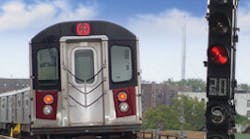Despite sky-high material costs, 2006 was a good year for transportation construction spending, thanks in part to strong state and local economies and the mid-2005 passage of the federal transportation bill SAFETEA-LU — the federal transportation bill created to replace the previous multi-year transportation bill, TEA-21, which expired in 2003. “What's happening now is building that was approved several years ago,” says Jim Haughey, director of research and analytics for Norcross, Ga.-based research firm Reed Construction Data. “It took a long time for that to happen as opposed to putting up new hotels.”
The delay was partially due to the arduous approval process many transportation construction projects face, but federal funding issues also contributed to the slowdown during 2003 and 2004, according to New York-based McGraw-Hill Construction. During those years, the research firm says, highway and bridge construction activity dropped by 5% while waiting for the passage of SAFETEA-LU. “It was about a year and a half later than was expected,” says Jeffrey Levy, president and CEO of New York-based track and transit construction company RailWorks. “The long development cycle has not been treated well by escalations in material costs. So if you had a project that was budgeted three years ago, by the time the funding came out, the price for the same job is that much higher.”
Indeed, high material costs drastically slowed the entire heavy construction market this summer, according to Haughey, but strong growth earlier in the year, combined with some price decreases later in the year allowed 2006 to end on a high note. “The prices are beginning to weaken, so that budget will stretch a little further in December than it did in August,” he says.
For transportation construction overall (ports, airports, and rail), Reed Construction Data expects to see 12.6% gain this year, despite just around 2% growth in previous years, according to Haughey, who says construction spending is expected to increase by 15% or more in each of the next couple of years.
Road construction spending also experienced strong growth in 2006 — about 15% according to Haughey. “That 15% has to have a big healthy subtraction for higher costs,” he says. “Nonetheless, that's a real expansion in miles paved. We think it will be about 10% next year and 7% in 2008 — that's a little bit of real growth after inflation.”
Haughey says the money for road construction is coming from general appropriations from state governments and local governments, who are doing better financially now, as well as a boost from private sources, such as in the growing market for private toll roads. “That opens up a new source of money,” Haughey says. “There's no bond issue, no increase in tax rates. The people who drive on the road will pay for it.”
He believes this trend is particularly of interest because “the federal money and the local money as well from the gas taxes is, at best, keeping up with inflation.”
Over the next few years, Haughey says highways will continue to be the biggest transportation category, “so a little bit of growth in highways amounts to a lot of money,” he says. “In terms of where the dollar value contracts are going to be, it has to be highways, because it's four or five times bigger than anything else.”
Still, airport and rail construction have also experienced strong growth over the past year, thanks in part to strong revenues by railroad companies and airlines.
For railroads, added revenue has come from picking up more freight business from trucks. “Railroads' main business is moving commodities, and in a very strong economy, the commodity side of the business booms,” Haughey says. “Pressure on available capacity has been strong, and that has prompted carriers to spend money to add capacity.”
Levy says the passage of the federal transportation bill has helped the rail industry as well. He says SAFETEA-LU provides about $50 billion for transit system projects, including bus rapid transit as well as light rail and heavy rail projects over a five-year term. “There's a fair amount of work that's going to be visible to the public in the next 12 months,” he says.
Port construction is another area that isn't predicted to add much new work for contractors over the next few years. “The pressure to do something is not as great as it was a couple of years ago,” Haughey says. “It is an expanding market, but it's not something for contractors to get excited about.”
Even so, while transportation construction spending as a whole is expected to remain strong in the short term, new starts are expected to slow this year. “Electricians probably get called in after the bid is done, and that's going to be strong,” Haughey says. “But if you're a designer who designs dams or railroad right-of-ways, the best business is probably behind you.”



